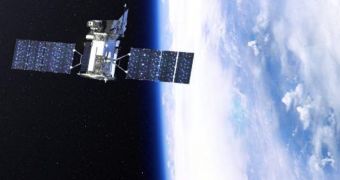Scientists at the American space agency announce that everything is in order and on plan for the planned February 23 launch date of NASA's newest Earth-monitoring satellite, called Glory.
The spacecraft is being launched to keep track of tiny particles in our atmosphere called aerosols. They can influence our planet's climate to a great extent, and so researchers need to keep an eye on them at all times.
Understanding the mechanisms through which they operate and interconnect with other particles and phenomena in the atmosphere could be of tremendous value for climate experts seeking to develop models of how Earth's climate will look in the future.
At the same time, the new satellite will also carry out non-stop observations of the Sun, monitoring a large number of parameters that NASA has been keeping track of for years.
Glory's main mission is to clear up some long-standing uncertainties and mysteries related to the planet's climate and the phenomena that influence it the most. It will understand the different contributions to global warming made by anthropogenic and natural aerosol contributions.
Overall, the satellite's instruments will help investigators make out the causes and consequences of climate change. The phenomenon is beginning to make its effects felt more and more, at numerous locations, but the interplay of factors causing it is still mysterious.
“Glory is going to help scientists tackle one of the major uncertainties in climate change predictions identified by the United Nation's Intergovernmental Panel on Climate Change: the influence of aerosols on the energy balance of our planet,” Michael Freilich explains.
“This mission also marks the first satellite launch under President Obama's climate initiative that will advance the United States' contribution to cutting-edge and policy-relevant climate change science,” the scientist goes on to say, quoted by Space.
He holds an appointment as the director of the Earth Science Division in the Science Mission Directorate at NASA Headquarters in Washington, DC.
Glory is now scheduled to take off from the Vandenberg Air Force Base (VAFB) in California, at 1010 GMT on February 23. It will be carried to orbit aboard a Taurus XL 3110 delivery system, built by Orbital Sciences Corporation.
As it makes its way to the skies, it will get included in the Afternoon Constellation (A-train), which features several other NASA Earth-observing satellites.
“The Afternoon Constellation consists of multiple spacecraft flying in close proximity to create the first ever 'super observatory' that will give us near simultaneous observations of the Earth that include land, ocean and atmosphere,” said on January 20 Joy Bretthauer, who is the NASA Glory program executive.

 14 DAY TRIAL //
14 DAY TRIAL //